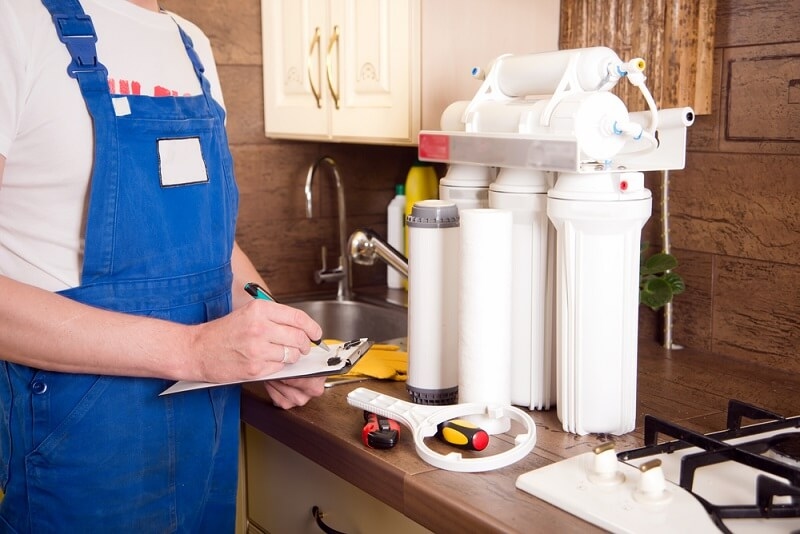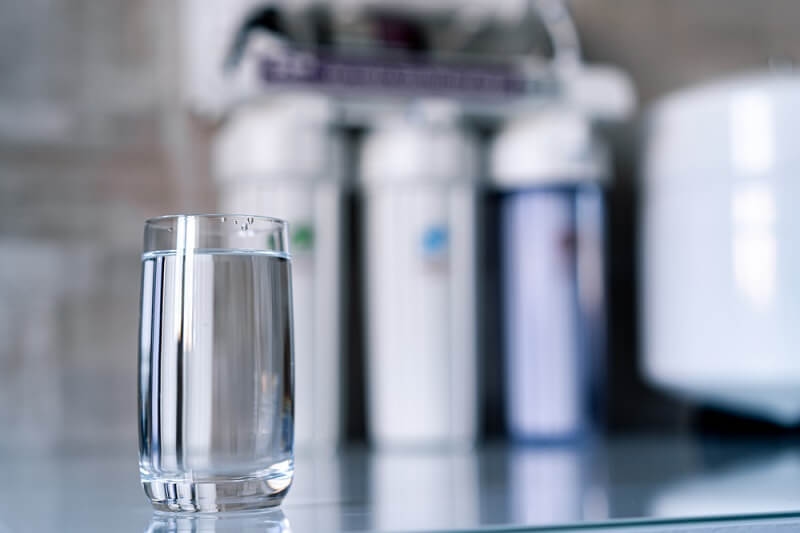Clean, safe water isn’t a luxury — it’s a basic need. Even if your tap water looks fine, it can still hide contaminants like lead, chlorine byproducts, PFAS (“forever chemicals”), or bacteria. These don’t just affect taste; they can harm your health over time. That’s why having a water filter system for home is no longer optional — it’s essential.
But here’s the catch: walk into a store or browse online, and you’re swamped with options. From budget pitchers to high-tech reverse osmosis water filters and full-scale whole house water filters, it’s easy to get lost.
How to Choose the Best Water Filter System for Your Home
This guide cuts through the noise. You’ll learn how to figure out exactly what you need, what the jargon means, and which type of home water filtration system makes sense for your space, budget, and water quality.
Step 1: Test Your Water Before You Buy
Don’t guess — test. You can:
- Request your city’s annual water quality report.
- Use an at-home testing kit.
- Hire a lab for a detailed analysis.
Testing shows you what you’re actually drinking — lead, chlorine, PFAS, pesticides, bacteria, or hardness. Without it, you might buy the wrong water filtration system — either overkill or not nearly enough.
You may like: 4 Tips to Choose the Right Kitchen Furniture
Step 2: Know the Types of Filtration Systems
Different systems tackle different problems. Here’s a breakdown so you don’t waste money on the wrong one.
Activated Carbon Filters
These are common in pitchers, faucet-mounted filters, and some under-sink units. They’re great for:
- Removing chlorine taste and odor.
- Reducing pesticides and VOCs.
- Improving overall flavor.
Best for: Light filtering when your main concern is taste and basic chemical reduction.
Reverse Osmosis (RO) Systems
The reverse osmosis water filter is the heavy-hitter. It uses a semi-permeable membrane to strip out 95–99% of contaminants, including:
- PFAS
- Fluoride
- Arsenic
- Nitrates
- Heavy metals
Many RO systems also have pre-filters, post-filters, and even UV light to kill bacteria. Some add a remineralization stage so your water tastes fresh, not flat.
Best for: Households dealing with multiple contaminants or questionable water sources.
Multi-Stage Filters
These combine several filtration methods:
- Sediment filter for dirt and rust.
- Carbon filter for chemicals and taste.
- RO membrane for dissolved contaminants.
- Optional remineralization or UV sterilization.
The more stages, the more comprehensive your water purifier for home will be.
UV Filters
UV light zaps bacteria, viruses, and parasites without adding chemicals. Often paired with carbon or RO for complete protection.
Whole House Water Filters
If you want every faucet in your home to deliver clean water — not just the kitchen sink — go for a whole house water filter. Installed at your main water line, it filters water for:
- Drinking
- Cooking
- Bathing
- Laundry
These don’t usually handle fluoride or dissolved solids, so you may still want a separate drinking water filter.
Step 3: Match the System to Your Needs
Your choice depends on three main factors:
- Water Test Results — Match your system to your actual contaminants.
- High chlorine → Carbon filter.
- PFAS, lead, nitrates → Reverse osmosis.
- Microbes → UV or RO + UV.
- Coverage Area — Do you need filtered water everywhere or just for drinking?
- Drinking only → Countertop RO or under-sink RO.
- Entire house → Whole house system + optional RO for drinking.
- Budget & Maintenance — Factor in both upfront cost and filter replacements.
More to Explore: The Future of Home Security: How AI is Enhancing Safety
Step 4: Pros and Cons of Each System
Pitchers & Faucet-Mounted Filters
- Pros: Cheap, portable, no installation.
- Cons: Limited contaminant removal, frequent filter changes.
Countertop Reverse Osmosis
- Pros: Powerful filtration, no plumbing needed, great for rentals.
- Cons: Slower flow, produces wastewater, needs electricity.
Under-Sink RO Systems
- Pros: High-performance, hidden installation, better flow.
- Cons: Requires plumbing, higher upfront cost.
Whole House Water Filters
- Pros: Every faucet delivers filtered water, protects appliances.
- Cons: Expensive, needs professional installation, may need extra drinking water filtration.
Step 5: Key Features to Look For
- NSF/ANSI Certification — Ensures the system actually removes what it claims.
- Filtration Stages — More isn’t always better, but a solid multi-stage system usually performs best.
- Flow Rate — Check gallons per minute (GPM) for whole house units.
- Maintenance Schedule — Easy-change filters save you hassle.
- Wastewater Ratio — Especially for RO systems; the lower, the better.
Step 6: Recommended Systems by Need
Best for Heavy Contamination
- Aquasana OptimH2O RO — Under-sink RO with Claryum carbon filtration and remineralization.
- Bluevua RO100ROPOT — Countertop RO, great for rentals.
Best Portable Option
- TOKIT T1 Ultra — 6-stage countertop RO with UV sterilization and smart monitoring.
- RKIN U1 — Compact RO + UV + hydrogen infusion.
Best Whole House Setup
- Home Master 3-Stage — Filters sediment, chemicals, and some heavy metals.
- Express Water 3-Stage — Affordable and solid performance.
Step 7: Maintenance Matters

The best home water filtration system is only as good as its upkeep:
- Replace filters on schedule — usually every 6–12 months.
- Sanitize tanks and housings as needed.
- Watch for drops in water pressure — a sign your filter needs changing.
Skipping maintenance doesn’t just reduce performance — it can make your water dirtier than before.
Step 8: Don’t Ignore Long-Term Costs
- Pitcher filters → $40–$80/year in replacements.
- Countertop RO → $80–$150/year.
- Under-sink RO → $100–$200/year.
- Whole house → $150–$400/year.
Factor this into your decision so you’re not stuck with an expensive upkeep bill.
Step 9: The Smart Buying Process
- Test your water.
- Decide on coverage (drinking water only or whole house).
- Match technology to contaminants.
- Check certifications.
- Compare costs (upfront + maintenance).
- Read real customer reviews — not just marketing claims.
- Buy from a reputable source.
Don’t Miss: 5 Common Bedding Mistakes That Cause Bad Sleep
Final Thoughts
Choosing the right water filter system for home isn’t about buying the biggest, most expensive unit. It’s about matching the right water filtration system to your actual needs.
For most people:
- A certified reverse osmosis water filter is the safest bet for drinking water.
- A whole house water filter makes sense if you want cleaner water for every tap.
- A portable water purifier for home works best for renters or small spaces.
Clean water should be a guarantee, not a gamble. Get the right system, maintain it well, and you’ll protect your health — and your family’s — for years to come.



